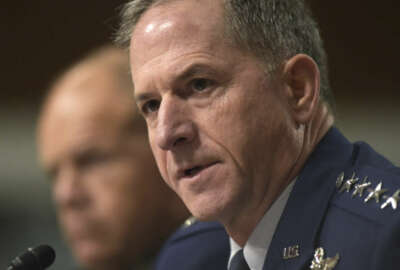After years of scrapping to fill holes in much needed career fields, the Air Force finally has a much more manageable problem: Too many people.
Lt. Gen. Brian Kelly, Air Force deputy chief of staff for manpower, personnel and services, said even as the service continues to grow, its manning levels are staying steady. That’s good news for a service that needs highly trained airmen to work on complicated aircraft but bad news for airmen who are hoping to make an extra buck.
“Manning levels have, in some cases, exceeded our requirements,” Kelly said. “In many areas, we probably don’t need as many offerings for the bonuses and opportunities for those retentions incentives as we’ve had in the past.”
For end strength in general, the Air Force was supposed to grow by about 900 to 333,700 active duty airmen in 2020. Kelly said the service met that goal, and it actually ended up about 900 above that benchmark.
“Over the last five years, we’ve been able to build back about 23,000 members back into the inventory to fill a lot of holes,” Kelly said.
There was a time not too long in the past when the Air Force was begging for aircraft maintainers and was dealing with a 4,000 airmen shortfall. With bonuses, incentives, training and new talent management initiatives, the service filled that gap in only a few years. It’s still hunting for more senior maintainers, but feels like it’s in a much better position than in the past.
That doesn’t mean all career areas are manned to the brim. Kelly said there are still career fields that need help.
“We will put out a list of opportunities and places for folks to retain from and to,” Kelly said. “You’ve seen us produce those annual lists that show those places where we have enjoyed high manning and the high retention, and those places where we’re a little bit lower, and they won’t change much from what you’ve seen in the past.”
Traditionally operational positions tend to be lower manned while support positions have higher employment rates.
Pilot retention has been a thorn in the paw of the Air Force for a while now. Kelly said the pilot shortage continues to hover around 2,000.
However, coronavirus has changed the dynamics of the pilot market as many of the Air Force’s fliers were leaving for airlines after being trained.
The service saw a small uptick in pilots staying in the military this summer.
“The Air Force is using existing policy that allows members with an approved future retirement or separation date to withdraw their retirement/separation or extend their retirement/separation date,” Lt. Col. Malinda Singleton told Federal News Network. “We started this effort on March 11 by sending a message to 575 rated officers. Normally, airmen with an approved separation date are limited to requesting an extension to their date of separation of 90 days or less. However, under this program we offer extensions of up to 12 months. Over 40 rated officers have taken advantage and extended their separation date more than 90 days.”
Kelly said the Air Force isn’t resting on its laurels, though. It’s looking to build on some of talent management revamping it did in 2020. This past year the service created special career tracks for certain jobs like cyber operators so they didn’t fall behind their peers by taking unusual paths.
This coming year, the Air Force wants to use airmen’s performance competencies to vet them for leadership positions.
“There’s been a lot of work that’s been done to develop what we call the foundational competencies for our airman,” Kelly said. “Those are the universal competencies and attributes that we really want to drive and incentivize in how we teach, how we learn, how we experience, how we train our airmen across the board.”
Those are used for creating training and education. However, the Air Force wants to see how airmen are actually taking those competencies and implementing them into their career.
“We’ve been focused on transitioning our officer evaluation and enlisted evaluation systems to be able to take those competencies, identify the key ones that we know are needed -particularly for performance against the national defense strategy,” Kelly said. “We want to make sure we use those as the basis to evaluate performance and incentivize the right kinds of behaviors that we want.”
Those competencies include leading airmen in formal assignments, managing time, improving units and taking care of assets.
“Airman leadership qualities are a translation of those competencies in a way that allows us to begin to evaluate performance,” Kelly said. “We’re getting ready to release the qualities out to the field in a test drive configuration to allow them to be used for feedback.”
That will give airmen a chance to sit down with supervisors and review their qualities and grade them on a rubric.
“Not only does it incentivize and drive performance, but it also helps us incentivize and drive culture,” Kelly said.
Copyright
© 2024 Federal News Network. All rights reserved. This website is not intended for users located within the European Economic Area.
 First Look
First Look